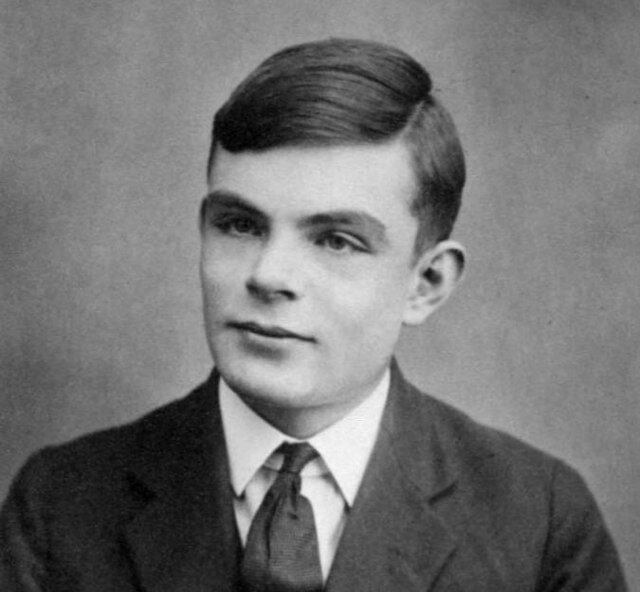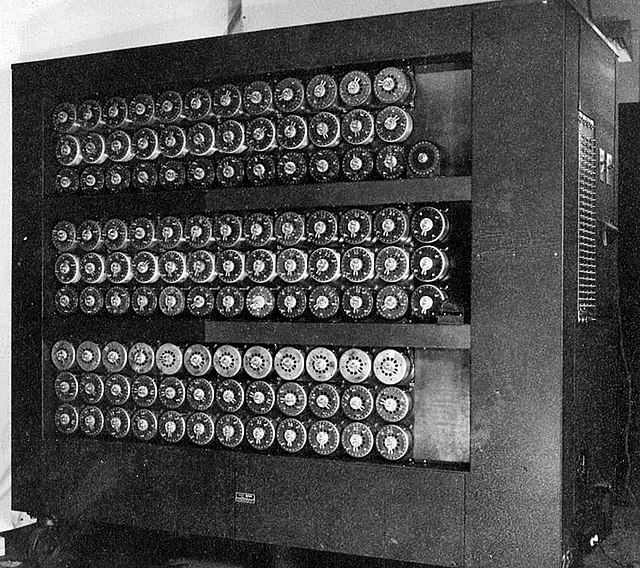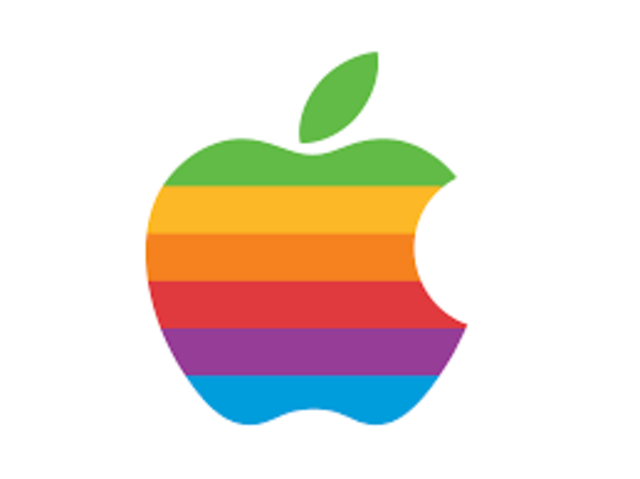Among many other things Alan Turing was a mathematician, computer scientist and a cryptanalyst. He is considered to be the father of theoretical computer science and artificial intelligence. We enjoy the benefits of modern-day computers due to his great contribution in creating them. However, Alan Turing has not always been a well-respected individual. He endured immense hardships to receive the glory we praise him with today.
 Alan Turing aged 16
Alan Turing aged 16
Early Life
Alan Turing was born on 23rd of June 1912 in Maida Vale, London. His parents were Julius Mathison Turing, a Civil Service worker and Ethel Sara Turing, daughter of the chief engineer of the Madras Railway. Turing also had an older brother – John Turing.
From a very early age Turing showed signs of genius. Unfortunately, his natural tendencies to excel in mathematics and science were not well received. His teachers’ understanding of proper education favored the classics. Their lack of support, however, did not affect Turing’s love for theoretical science and he continued to achieve great results throughout his education.
The Turing Machine
Alan Turing influenced the development of theoretical computer science by creating the Turing Machine – a model of a general-purpose computer.
In 1934 he graduated King’s College with first-class honors in mathematics. In 1935 he was elected a Fellow of King’s College for his dissertation in which he proved the central limit theorem. Only a year later he published his paper “On Computable Numbers, with an Application to the Entscheidungs problem”, the results became known as the Turing Machine.
The paper had been called “easily the most influential math paper in history” by numerous mathematicians and scholars. Turing was praised by the Hungarian American mathematician John von Neuman for his research. Newman claimed that the central concept of the modern computer was due to Turing’s paper.
Alan Turing may not have invented the first computer, but his research made its existence an achievable possibility.
World War II
In 1939 when the United Kingdom declared a war on Germany, Alan Turing reported to Bletchley Park, a wartime station during WWII. There he led Hut 8, the section which oversaw German naval cryptanalysis. Alan Turing became a crucial part in cracking enciphered messages called the ‘Enigma’ code. He created the Bombe, a device which helped decipher the encrypted codes and helped the Allies defeat the Axis powers in many pivotal moments.
Up until recently very little was known about Alan Turing. His contribution to ending the war went unrecognised due to classification. The enigma was declassified in the 70’s however Turing’s deciphering techniques remained classified until 2013 when his papers were released to the British National Achieves.
 Wartime Picture of Bletchley Park Bombe
Wartime Picture of Bletchley Park Bombe
Love Life
His many achievements and contributions to modern technologies were largely overshadowed by his personal relationships, open homosexuality and prosecution scandal.
His first probable relationship happened in 1926 when Turing was admitted in a boarding school. There he met Christopher Morcom, whom he created a significant relationship with for he was considered to be Turing’s first love. Sadly, Morcom’s death followed shortly after, leaving a notable impact on Turing’s life. In one of the many letters, he sent to Morcom’s mother, Turing wrote:
“I know I must put as much energy if not as much interest into my work as if he were alive, because that is what he would like me to do.”
Couple of years down the line, while heading the Hut 8, he met a fellow mathematician and cryptanalyst Joan Clarke. In 1941 they got engaged, but not long after Turing broke off the engagement by admitting his homosexuality. Allegedly, Joan was not fazed by the revelation.
Ten years later, in January 1951, Turing started a relationship with nineteen year old, unemployed Arnold Murray whom he had met shortly before.
It is unclear why there was a ten-year gap between his relationships with Clarke and Murray. One may theorize that Turing was simply not interested in pursuing a romantic partner, or the criminalization of homosexuality was preventing him from finding such. Or perhaps, he had not entirely come in terms with his homosexuality at that time.
Prosecution
Shortly after starting his relationship with Murray he became a victim of a robbery. Murray confessed to being an acquaintance of the robber, so Turing reported the case to the police. During the investigation Turing admitted having a sexual relationship with Murray and both men were charged with ‘gross indecency’.
In March 1952 Alan Turing was prosecuted for homosexual acts. At that time and until 1967, homosexuality was illegal in the United Kingdom.
As per his brother’s and solicitor’s advice Turing pleaded guilty. He was given the choice of either imprisonment or probation, while Murray got away with only a conditional discharge. Turing chose the latter. His probation required him to undergo hormonal treatment (chemical castration) by injecting himself with what was known as stilboestrol, a synthetic estrogen. The treatment rendered him impotent.
After his conviction, Turing could no longer continue working for the government as a cryptographic consultant and his security clearance was revoked. He was also banned from entering the USA. The only thing he could keep was his academic job.
Cause of Death
On 8th of June 1954, at the age of 41, Alan Turing was found dead by his housekeeper. The autopsy report revealed that the cause of his death was cyanide poisoning. The coroner ruled it as suicide.
However, his death is surrounded by a few different theories.
The biographers Andrew Hodges and David Leavitt believe his death to be a suicide. They speculate that Turing was re-enacting a scene from the 1937 Walt Disney movie Snow White & The Seven Dwarfs, which was his favorite fairy tale. There was a half-eaten apple by his bed when Turing was found dead. The apple was not tested for cyanide, but it was speculated that it was the means by which Turing consumed the poison. By Leavitt’s word, Turing took “an especially keen pleasure in the scene where the Wicked Queen immerses her apple in the poisonous brew”.
In fact, the half-eaten apple has become such a popular symbol that the public had theorized for years the relation between Turing and the Apple logo. One of the first logos of the company was a half-eaten apple colored with the rainbow. Many people have speculated that the logo was hinting not only to Turing’s death but also to his sexual identity. Although, the rumors were denied by Steve Jobs: “It isn’t true, but God we wish it were!”

Theories & Conspiracies
Philosopher Jack Copeland had a different theory. He pointed out that the autopsy results were more consistent with inhalation of the poison rather than digestion. He indicated the presence of an apparatus in Turing’s home which was used to electroplate gold onto spoons. Such an apparatus releases cyanide fumes which could have been inhaled by Turing. Turing’s mother also believed her son’s death to be accidental, a result from Turing’s careless storage of laboratory equipment.
Furthermore, both Copeland and his mother claimed that Turing was not showing any signs of dependency on the drugs, and, in fact, he overcame the hardships of the hormonal treatment with a smile and “good humor”.
On the other hand, author Roger Bristow theorized that Turning’s death might have been a murder.
“If you look at his autopsy report it’s quite clear that although there was cyanide in his body the doctor quite clearly states his death was caused by extreme violence.”
He speculated that the FBI wanted Turing dead since he had intelligence on Russian agents who had infiltrated the American government and had occupied high positions.
Posthumous Pardon
More than half a century after Turing’s prosecution and 42 years after the United Kingdom decriminalized homosexuality. In 2009 former British Prime Minister Gordon Brown made an official apology regarding the way Turing was treated by the British government.
Queen Elizabeth II went on to grant Alan Turing a posthumous pardon in 2013.
The ‘Alan Turing Law’ was passed In 2017. It was an informal law which serves to grand amnesty and pardons men who were prosecuted and wrongfully treated by historically outdated legislations which outlawed homosexual people and acts.
Nowadays the name Alan Turing is referred to with great respect. His achievements and contributions to World War II are rightly celebrated. The 2014 ‘The Imitation Game’ movie further pays homage to Turing’s contributions to WWII by covering the events leading to the creation of the Bombe.
Regardless of his sexuality and despite the prejudice he faced. Alan Turing was able to change the world for the better. His efforts in WWII helped shorten the war and save thousands, if not millions of people. We benefit from modern technologies today thanks to his research papers which have greatly influenced generations of scientists and mathematicians.

